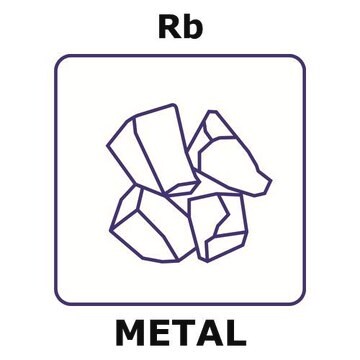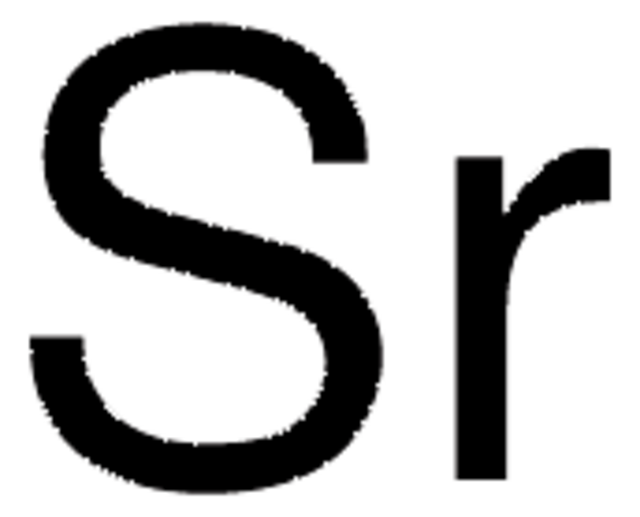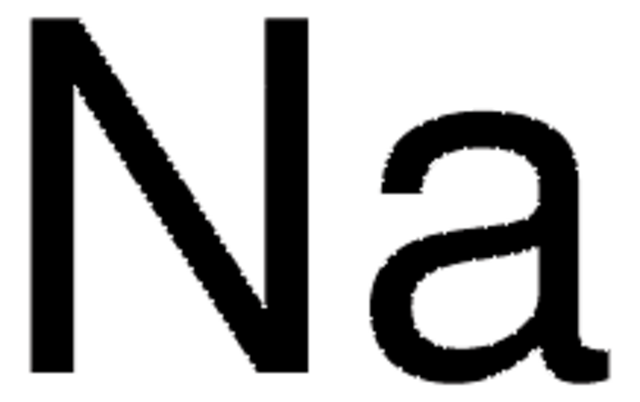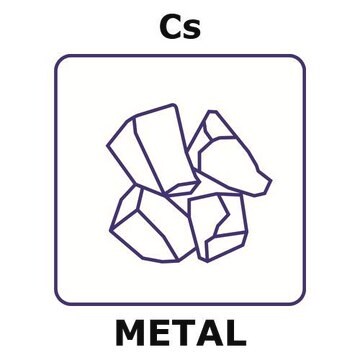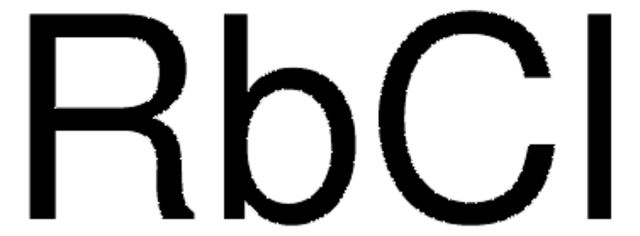276332
Rubidium
ingot, 99.6% trace metals basis
About This Item
Prodotti consigliati
Livello qualitativo
Saggio
99.6% trace metals basis
Stato
ingot
Impiego in reazioni chimiche
reagent type: reductant
Confezionamento
pkg of Packaged in: Breakseal Ampule
Resistività
11.0 μΩ-cm, 20°C
Impurezze
0.2-0.4% Cs
P. ebollizione
686 °C (lit.)
Punto di fusione
38-39 °C (lit.)
Densità
1.53 g/mL at 25 °C (lit.)
Stringa SMILE
[Rb]
InChI
1S/Rb
IGLNJRXAVVLDKE-UHFFFAOYSA-N
Cerchi prodotti simili? Visita Guida al confronto tra prodotti
Descrizione generale
Applicazioni
It can also be used as a reducing agent to synthesize reduced polycyclic aromatic hydrocarbons.
Avvertenze
Danger
Indicazioni di pericolo
Consigli di prudenza
Classi di pericolo
Eye Dam. 1 - Skin Corr. 1B - Water-react 1
Rischi supp
Codice della classe di stoccaggio
4.3 - Hazardous materials which set free flammable gases upon contact with water
Classe di pericolosità dell'acqua (WGK)
WGK 3
Punto d’infiammabilità (°F)
Not applicable
Punto d’infiammabilità (°C)
Not applicable
Dispositivi di protezione individuale
Eyeshields, Faceshields, Gloves, type P3 (EN 143) respirator cartridges
Scegli una delle versioni più recenti:
Possiedi già questo prodotto?
I documenti relativi ai prodotti acquistati recentemente sono disponibili nell’Archivio dei documenti.
I clienti hanno visto anche
Il team dei nostri ricercatori vanta grande esperienza in tutte le aree della ricerca quali Life Science, scienza dei materiali, sintesi chimica, cromatografia, discipline analitiche, ecc..
Contatta l'Assistenza Tecnica.